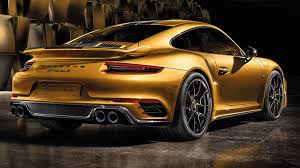


This edition of the Caterham Super 7 JPE is the 5 speed / Manual version and was first brought out in 1992. This was at around the same time as the introduction of the 1993 Jaguar XJ 220 S 3.5 V6 Turbo and the 1992 Bugatti EB110 SuperSport.This particular Caterham Super 7 has a 1998cc Naturally Aspirated Petrol powerplant with 4 cylinders in a St formation.
The Super 7 shares its Petrol St4 engine configuration with the likes of the 2019 Ariel Atom 4 2.0 Turbo and the 2013 Caterham 7 620 R 2.0 L Supercharged. If you're looking for other fast cars which share the Super 7's Rear Wheel Drive, Coupe combination then how about the 1982 Fiat X1/9 1.5 8V or the 1965 Aston-Martin DB6 1965.
Weighing in at 539 kgs (1188 lbs) this makes the Caterham Super 7 JPE in the same weight category as the 2013 Caterham 7 485 2.0L or the give or take 50kg.
![Mini Cooper John Cooper Works Cabrio 2.0 Turbo - [2022] image Mini Cooper John Cooper Works Cabrio 2.0 Turbo - [2022] image](/editionimages/2340.jpg)
The Caterham Super 7 shares the same bhp with the 2022 Mini Cooper John Cooper Works Cabrio 2.0 Turbo (228 bhp)
In terms of power the 1998cc 16V St4 engine produces 250 bhp (186 kW) @ 7750 rpm similar to the 2022 Mini Cooper John Cooper Works Cabrio 2.0 Turbo (228 bhp) or the 2021 Ford Mustang Mach-E AWD (266 bhp).
The Naturally Aspirated St4 throws out 186 lb-ft (252.1 Nm) @ 6250 rpm placing it with cars of similar torque performance figures such as the 2022 Mini Cooper Countryman John Cooper Works 1.5 Turbo (162 lb-ft) or the 2020 Audi A1 A1 Sportback 35 TFSI S tronic S line (184 lb-ft).
If one combines the weight with power or torque performance for the Caterham Super 7 you can get a better idea of it's real world performance.
![Ascari A10 5.0 V8 - [2006] image Ascari A10 5.0 V8 - [2006] image](/editionimages/54.jpg)
The 2006 Ascari A10 5.0 V8 (488.2 bhp per ton) has similar Bhp Per Ton stats as the Caterham Super 7.
The Caterham Super 7 has a Power to weight ratio of 463.8 bhp per ton and 345.0 lb-ft per ton. Bhp Per Ton figures of the 1992 Super 7 competing with the 2006 Ascari A10 5.0 V8 (488.2 bhp per ton) or the 2014 Lamborghini Aventador LP750-4 Superveloce (485.2 bhp per ton).
If you agree with the late great Carroll Shelby then arguably an even better indicator of potential performance, Torque. Use weight as well and you end up with - Torque per ton, with the Caterham Super 7 generating around 345.0 lb-ft per ton. If you're curious as to what other cars have as much torque to weight then look no further than the 2004 Noble M400 3.0 V6 (367.9 lb-ft per ton) or the 1998 Mercedes CLK GTR 6.9 V12 (367.8 lb-ft per ton).
With a 0-60mph time of 3.50 secs or a 0-100km/h (0-62mph) of 3.6 secs, this made the Caterham Super 7 JPE as fast as the 2023 Chevrolet Camaro ZL1 6.2 V8 Convertible (3.50 secs) the 2023 Aston-Martin Valour 5.2 V12 Twin Turbo (3.50 secs) the 2022 Chevrolet Camaro SS 6.2 V8 (3.50 secs) the or the 2022 BMW 4 Series M4 CSL 3.0 Twin Turbo G82 (3.50 secs). This Caterham Super 7 JPE is also faster than the 2023 BMW i7 M70 xDrive G70 (3.60 secs) the 2020 Audi TT RS 2.0 Turbo (3.60 secs) the 2020 Iso Rivolta GTZ 6.2 V8 Supercharged (3.60 secs) the and the 2019 BMW X6 M Competition 4.4 V8 Turbo F85 (3.60 secs).
When talking about the performance of the Caterham Super 7 on the drag strip it can reach a quarter mile in an estimated 10.85 secs @ 126.1 mph. Similar performance down the quarter mile can be found with the the 2010 Ford Focus RS500 (10.80 secs), the 2012 Mercedes CLS Class 63 AMG Shooting Brake (10.80 secs), and the 2012 Maserati Quattroporte GTS 3.8 V8 Biturbo (10.80 secs).
Modern performance cars are often artificially restricted to 155mph. The 1992 version of the Caterham Super 7 JPE has a maximum speed of 146mph.
If maxing out your car on the AutoBahn is your thing and you're wondering what's faster than the 1992 Caterham Super 7 JPE then how about the 2016 Maserati Quattroporte 3.0 V6 Turbo Diesel (157 mph), the 2006 Mitsubishi Lancer Evo IX FQ 360 (157 mph), or the 2005 Mitsubishi Lancer Evo IX FQ 320 (157 mph).









Fiat 124 Abarth Rallye
Engine: Naturally Aspirated Petrol | 1756cc 8v St4
Top Speed: 118 mph
0-60mph: 7.50 seconds

BMW Z4 M40i 3.0 Turbo
Engine: Turbo Petrol | 2998cc 24v St6
Top Speed: 249.4 kph
0-100kph: 4.4 seconds



















